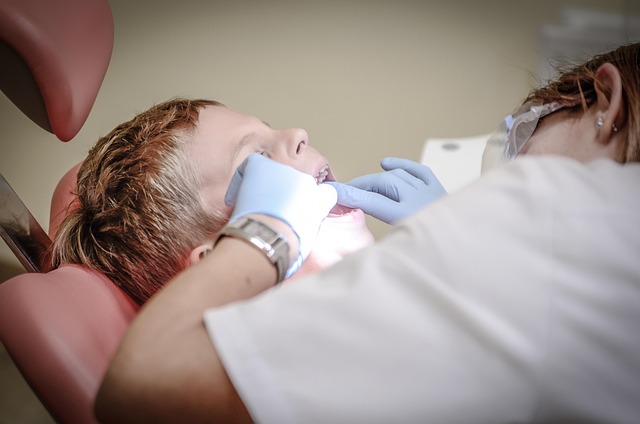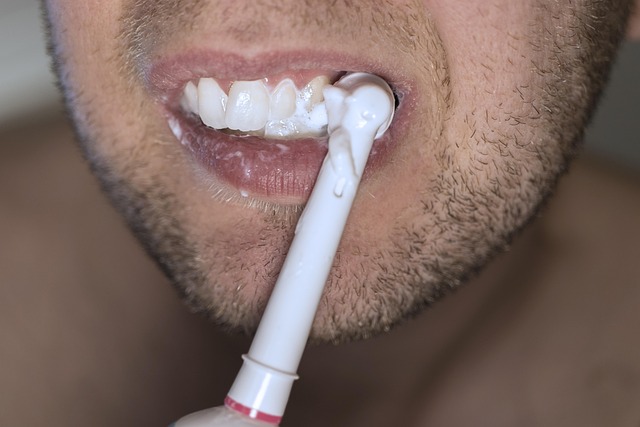Dental professionals face significant legal risks due to dental professional liability, stemming from issues like misdiagnosis, treatment plans, informed consent, and hygiene practices. To mitigate these risks, they must implement robust risk management strategies including clear communication, updated protocols, adherence to industry standards, and regular policy reviews. Effective record-keeping, particularly detailed patient charts and documentation of informed consent, is crucial for defense against claims. Dental professionals should also secure adequate insurance coverage, focusing on dental professional liability policies, and consult legal experts when facing claims.
Protect your dental practice from legal claims with our comprehensive guide. Dental professional liability is a crucial consideration for every dentist, as risks and potential claims can arise from various sources. This article explores key areas such as understanding dental professional liability, identifying common legal issues, implementing effective risk management strategies, essential documentation practices, insurance coverage options, and building a solid defense. Stay ahead of the curve and safeguard your practice today.
- Understanding Dental Professional Liability: Risks and Potential Claims
- Identifying Common Legal Issues Faced by Dentists
- Implementing Risk Management Strategies for Your Dental Practice
- Essential Documentation and Record-Keeping Practices to Prevent Lawsuits
- Insurance Coverage Options to Protect Against Dental Malpractice Suits
- Building a Solid Defense: What to Do When Faced with a Legal Claim
Understanding Dental Professional Liability: Risks and Potential Claims

Dental professionals, like any healthcare providers, face unique risks when it comes to legal claims due to dental professional liability. This refers to potential lawsuits arising from errors or omissions during dental treatment. Common areas of concern include misdiagnosis, improper treatment plans, failure to obtain informed consent, and issues related to hygiene and sterilization practices.
Understanding these risks is crucial for safeguarding your dental practice. Many claims stem from patient dissatisfaction or perceived negligence, highlighting the importance of clear communication, up-to-date protocols, and adherence to industry standards. Regularly reviewing and updating your practice’s policies and procedures can help mitigate these risks and ensure you’re prepared to navigate any dental professional liability challenges that may arise.
Identifying Common Legal Issues Faced by Dentists

Dental professionals, like any other healthcare providers, face a unique set of legal challenges. One of the primary concerns is dental professional liability, which can arise from a variety of situations. Common issues include misdiagnosis or incorrect treatment plans, which may lead to patient harm or discomfort. For instance, overprescribing medication or failing to consider patient allergies could result in adverse reactions.
Another area of concern is consent and communication. Dentists must ensure informed consent from patients, clearly explaining procedures, risks, and alternatives. Failure to do so could lead to claims of negligence. Moreover, any incident involving children or vulnerable adults requires meticulous documentation and adherence to legal guidelines to prevent potential lawsuits related to dental care.
Implementing Risk Management Strategies for Your Dental Practice

Implementing robust risk management strategies is an essential step for any dental practice aiming to safeguard itself from potential legal claims and associated financial burdens. As a dental professional, understanding and mitigating risks are key to ensuring your practice’s longevity and your peace of mind. A comprehensive approach involves several layers of protection.
Start by conducting thorough risk assessments to identify potential hazards within your clinic, from equipment malfunctions to patient consent issues. Regular reviews and updates of these assessments are crucial as practices evolve. Next, establish clear policies and procedures that address common areas of liability, such as infection control, informed consent, and record-keeping. Training staff extensively on these protocols will ensure consistency and reduce errors. Additionally, keeping detailed records and implementing a robust communication system can significantly aid in resolving issues before they escalate into legal matters, especially when dealing with dental professional liability claims.
Essential Documentation and Record-Keeping Practices to Prevent Lawsuits

For dental professionals, preventing legal claims starts with robust documentation and record-keeping practices. Maintaining detailed patient charts that include comprehensive medical histories, treatment plans, and consent forms is crucial for establishing informed consent and defending against allegations of negligence. Moreover, preserving clear communication records, such as notes from consultations or follow-up calls, can demonstrate a reasonable standard of care and mitigate potential disputes.
Beyond individual patient records, dental practices should implement systems to track insurance claims, billing errors, and patient complaints. Thorough documentation of these areas can help identify patterns or recurring issues that might signal areas for improvement and reduce the likelihood of legal action stemming from administrative oversights or patient dissatisfaction. Effective record-keeping serves as a powerful defense in the event of a dental professional liability claim.
Insurance Coverage Options to Protect Against Dental Malpractice Suits

Dental professionals have a range of insurance coverage options designed to protect them against potential legal claims, especially those related to dental malpractice. Dental professional liability insurance, also known as malpractice insurance, is a crucial component in managing risks associated with providing dental care. This type of insurance provides financial protection if a patient files a lawsuit alleging negligence or medical error during treatment.
When considering dental malpractice insurance, professionals should review various coverage options and policy limits to ensure adequate protection. Policies may include general liability coverage, which covers a wide range of claims, including those for property damage or personal injury. Additionally, specialized dental malpractice policies offer tailored protection by addressing unique risks within the dental profession, such as misdiagnosis, incorrect treatment planning, or errors in procedures.
Building a Solid Defense: What to Do When Faced with a Legal Claim

When faced with a legal claim, building a solid defense is crucial for any dental professional. The first step is to gather and document all relevant information related to the incident or dispute. This includes patient records, treatment notes, consent forms, and communication logs. Detailed documentation ensures that your actions were in line with industry standards and best practices, providing a strong foundation for your case.
Additionally, staying proactive by maintaining comprehensive insurance coverage tailored to dental professional liability is essential. Regularly reviewing and updating your policy to ensure it aligns with your practice’s specific risks can help mitigate potential financial burdens. Engaging with legal professionals experienced in dental cases can also provide valuable guidance, ensuring you understand the claim, its implications, and the best strategies for defense.
